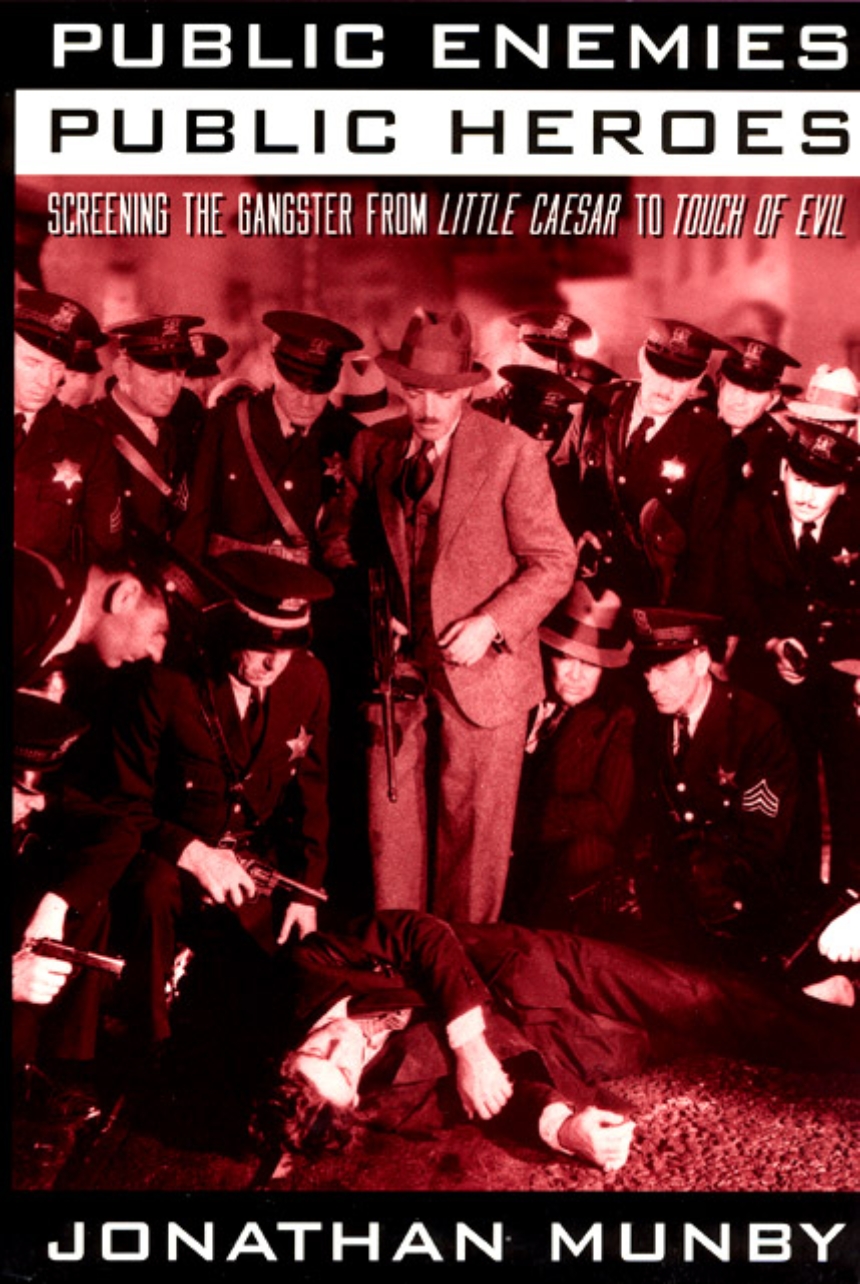Public Enemies, Public Heroes
Screening the Gangster from Little Caesar to Touch of Evil
9780226550336
9780226550312
9780226550343
Public Enemies, Public Heroes
Screening the Gangster from Little Caesar to Touch of Evil
In this study of Hollywood gangster films, Jonathan Munby examines their controversial content and how it was subjected to continual moral and political censure.
Beginning in the early 1930s, these films told compelling stories about ethnic urban lower-class desires to "make it" in an America dominated by Anglo-Saxon Protestant ideals and devastated by the Great Depression. By the late 1940s, however, their focus shifted to the problems of a culture maladjusting to a new peacetime sociopolitical order governed by corporate capitalism. The gangster no longer challenged the establishment; the issue was not "making it," but simply "making do."
Combining film analysis with archival material from the Production Code Administration (Hollywood’s self-censoring authority), Munby shows how the industry circumvented censure, and how its altered gangsters (influenced by European filmmakers) fueled the infamous inquisitions of Hollywood in the postwar ’40s and ’50s by the House Committee on Un-American Activities. Ultimately, this provocative study suggests that we rethink our ideas about crime and violence in depictions of Americans fighting against the status quo.
Beginning in the early 1930s, these films told compelling stories about ethnic urban lower-class desires to "make it" in an America dominated by Anglo-Saxon Protestant ideals and devastated by the Great Depression. By the late 1940s, however, their focus shifted to the problems of a culture maladjusting to a new peacetime sociopolitical order governed by corporate capitalism. The gangster no longer challenged the establishment; the issue was not "making it," but simply "making do."
Combining film analysis with archival material from the Production Code Administration (Hollywood’s self-censoring authority), Munby shows how the industry circumvented censure, and how its altered gangsters (influenced by European filmmakers) fueled the infamous inquisitions of Hollywood in the postwar ’40s and ’50s by the House Committee on Un-American Activities. Ultimately, this provocative study suggests that we rethink our ideas about crime and violence in depictions of Americans fighting against the status quo.
Table of Contents
List of Illustrations
Acknowledgments
Introduction
Screening Crime in the USA
An Undervalued Symbiosis
1. The Gangster’s Silent Backdrop
Contesting Victorian Uplift and the Culture of Prohibition
2. The Enemy Goes Public
Voicing the Cultural Other in the Early 1930s Talking Gangster Film
3. Manhattan Melodrama’s "Art of the Weak"
Tactics of Survival and Dissent in the Post-Prohibition Gangster Film
4. Ganging Up against the Gangster
Censorship, the Movies, and Cultural Transformation, 1915-1935
5. Crime, Inc.
Beyond the Ghetto/Beyond the Majors in the Postwar Gangster Film
6. Screening Crime the Liberal Consensus Way
Postwar Transformations in the Production Code
7. The "Un-American" Film Art
Robert Siodmak, Fritz Lang, and the Political Significance of Film Noir’s German Connection
Epilogue
From Gangster to Gangsta
Against a Certain Tendency of Film Theory and History
Appendix
Production Code Administration Film Analysis Forms, 1934-1957
Bibliography
Film Index
Subject Index
Acknowledgments
Introduction
Screening Crime in the USA
An Undervalued Symbiosis
1. The Gangster’s Silent Backdrop
Contesting Victorian Uplift and the Culture of Prohibition
2. The Enemy Goes Public
Voicing the Cultural Other in the Early 1930s Talking Gangster Film
3. Manhattan Melodrama’s "Art of the Weak"
Tactics of Survival and Dissent in the Post-Prohibition Gangster Film
4. Ganging Up against the Gangster
Censorship, the Movies, and Cultural Transformation, 1915-1935
5. Crime, Inc.
Beyond the Ghetto/Beyond the Majors in the Postwar Gangster Film
6. Screening Crime the Liberal Consensus Way
Postwar Transformations in the Production Code
7. The "Un-American" Film Art
Robert Siodmak, Fritz Lang, and the Political Significance of Film Noir’s German Connection
Epilogue
From Gangster to Gangsta
Against a Certain Tendency of Film Theory and History
Appendix
Production Code Administration Film Analysis Forms, 1934-1957
Bibliography
Film Index
Subject Index
